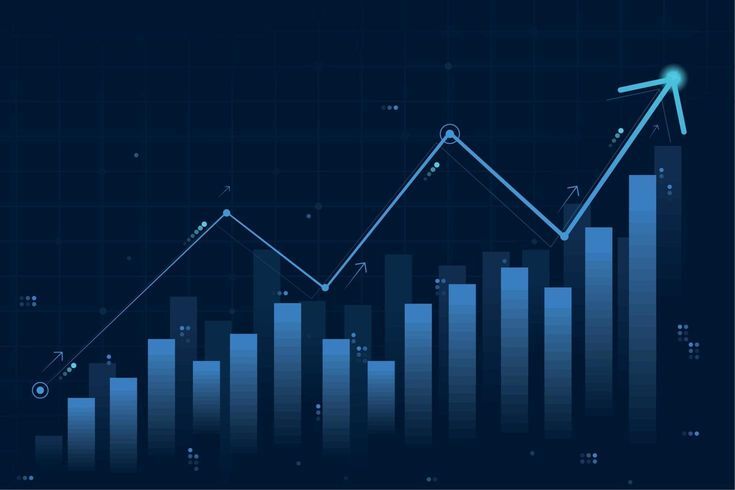Understanding BAC Stock and Its Dividend History
Bank of America (BAC) is one of the largest financial institutions in the United States, offering a wide range of financial products and services including consumer banking, corporate banking, investment banking, and wealth management. Investors looking to grow their wealth often turn to BAC stock for its combination of stable dividends and strong performance within the financial sector.
Before diving into the specifics of how to invest in BAC stock dividends, it’s important to understand the company’s dividend history and what it means for potential investors. BAC has a long track record of paying dividends, although the dividend payouts were temporarily suspended during the financial crisis of 2008. Since then, the bank has rebuilt its dividend profile and consistently returned value to its shareholders.
Dividends are a portion of a company’s earnings distributed to shareholders, typically on a quarterly basis. For BAC, dividends are paid in cash, making them an attractive option for investors looking for consistent income. However, dividend payouts depend on several factors, including the company’s profitability, economic conditions, and board decisions.
How Dividends Work for BAC Stock Investors
When you invest in BAC stock, you may become eligible to receive dividends if you hold the stock on the designated “record date.” The dividend payout is usually announced ahead of time, and investors who purchase the stock before the “ex-dividend date” will receive the next dividend payment.
A few key points to understand about how dividends work:
- Dividend Yield: The dividend yield is a ratio that compares the annual dividend payment to the stock’s price. For BAC, this yield can fluctuate based on market conditions and the company’s financial health. The yield provides investors with an estimate of the return they can expect from dividends alone, not including capital appreciation.
- Dividend Payout Ratio: This ratio shows how much of the company’s earnings are paid out as dividends. A high payout ratio might indicate that a company is returning a large percentage of its profits to shareholders, but it can also signal that the company is not reinvesting enough into its business for growth.
- Ex-Dividend Date: This is the date by which an investor must purchase shares in order to be eligible for the upcoming dividend payment. If you buy BAC stock on or after the ex-dividend date, you will not receive the upcoming dividend.
- Record Date: The record date is when the company checks its records to determine which shareholders are entitled to receive the dividend.
- Payment Date: This is the date when the dividend is actually paid out to shareholders. Typically, BAC pays its dividend quarterly.
Strategies for Investing in BAC Stock Dividends
There are various strategies that investors can use to maximize their returns from BAC stock dividends. Some investors focus on dividend growth, while others look for consistent income from their stock holdings. Here are a few approaches to consider when investing in BAC dividends:
1. Dividend Reinvestment Plans (DRIPs)
One of the most popular strategies for reinvesting dividends is through a Dividend Reinvestment Plan (DRIP). A DRIP allows investors to automatically reinvest the dividends they receive back into more shares of BAC stock, often without paying commission fees. This strategy can help investors compound their returns over time, especially if BAC stock is in a growth phase.
The advantage of DRIPs is that they allow investors to buy more shares during market downturns when prices are lower, effectively dollar-cost averaging. This strategy works best for long-term investors who believe in the future growth of the company and want to take advantage of compounding returns.
2. Dividend Growth Investing
Another approach is to focus on companies like Bank of America that have a history of consistently increasing their dividend payouts. BAC has been known for increasing its dividend over time, though not always at the same rate. This strategy is ideal for investors seeking not just regular income, but also growth in their dividends.
Investors using this approach focus on the potential for dividends to grow faster than inflation, which ensures that their income keeps pace with rising costs of living. Dividend growth investors also tend to invest in stocks with a stable financial background and long-term potential.
3. High-Yield Dividend Strategy
For investors prioritizing higher immediate income, the high-yield dividend strategy might be appealing. This strategy focuses on stocks that offer higher-than-average dividend yields. BAC has periodically increased its dividend yield, but it may not always be among the highest in the financial sector. For those looking for a higher payout, it is important to consider the stability of the company and ensure that its high dividend yield is sustainable over time.
Factors Influencing BAC’s Dividend Payments
Several factors influence whether Bank of America continues to pay, increase, or decrease its dividend payments. Understanding these factors is essential for any investor looking to rely on BAC dividends for income.
- Company Performance: The profitability of Bank of America plays a crucial role in its ability to pay dividends. If the company’s earnings fall due to economic downturns or operational challenges, it may reduce or even suspend its dividend payout. However, strong earnings often lead to increased dividends.
- Economic Conditions: As with any financial institution, BAC’s dividend decisions are also influenced by broader economic conditions. During periods of economic uncertainty or recessions, BAC may choose to conserve cash and reduce dividend payouts. Conversely, during times of strong economic growth, the bank may increase dividends to return more value to shareholders.
- Regulatory Environment: The financial sector is heavily regulated, and sometimes regulations may affect dividend payments. For example, after the 2008 financial crisis, banks like BAC were subject to stricter capital requirements, which temporarily hindered dividend payments.
- Capital Requirements: As a major financial institution, BAC must maintain a certain level of capital reserves to meet regulatory requirements. This can affect its ability to pay dividends, especially during periods when it needs to build or maintain its reserves for stability.
Tax Implications of BAC Stock Dividends
Dividends are subject to taxation, and it’s important for investors to understand the tax implications of receiving BAC stock dividends. In the United States, dividends are typically taxed at either the qualified dividend rate or the ordinary income rate, depending on various factors.
- Qualified Dividends: These are dividends paid by U.S. companies or qualified foreign corporations on stocks held for a certain period. Qualified dividends are taxed at a lower rate, which can range from 0% to 20%, depending on the investor’s tax bracket.
- Ordinary Dividends: If the dividend does not meet the requirements for qualified dividends, it is taxed as ordinary income. This means the dividend is taxed at the investor’s regular income tax rate, which can be higher than the qualified dividend rate.
Investors should consult a tax advisor to determine the exact tax impact of BAC dividends on their specific financial situation.
Risks of Investing in BAC Stock Dividends
While investing in BAC stock dividends can provide a steady income stream, there are several risks that investors should be aware of:
- Dividend Cuts: In tough economic times or periods of financial strain, BAC may reduce or eliminate its dividend. This risk is particularly relevant for investors relying heavily on dividends for income.
- Market Volatility: Like all stocks, BAC’s price can fluctuate based on market conditions, affecting the total return on investment. This can be especially challenging for dividend investors who may be concerned about the price of their stock falling, even if dividends remain stable.
- Interest Rate Risk: Changes in interest rates can affect BAC’s profitability, particularly since the company operates in the financial sector. Rising interest rates could lead to higher costs for borrowing and impact the bank’s ability to generate revenue, potentially affecting dividends.
Conclusion
Investing in BAC stock dividends offers a potential income stream and the opportunity for long-term growth. By understanding the mechanics of dividends, different investment strategies, and the factors that affect dividend payments, investors can make informed decisions about adding BAC to their portfolio. However, like any investment, there are risks involved, and it’s crucial to consider your financial goals and consult with a financial advisor before making decisions.
Bank of America has a long history of paying dividends and continues to be an appealing choice for dividend investors. Whether you’re looking for income, reinvestment opportunities, or dividend growth, BAC stock presents a solid option in the financial sector.










